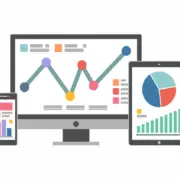Search Trends and SEO: Three things COVID-19 has changed about how we search
As we begin to emerge from the global pandemic, we recognize that consumer behaviors have changed how they search online. It is no surprise that online shopping and healthcare, wellness, and news searches skyrocketed during the pandemic while travel inquiries dropped. As consumers changed what they searched for, they also adapted how they phrased their searches. No longer do consumers use just keyword phrases, now they ask full questions and expect search engines to respond with exactly what they’re looking for.
So, as we move into a post-COVID world, here are three things that are not going away when it comes to search trends and how you can adapt.
No excuse for bad content
Google introduced the algorithm BERT in October 2019 and it jumped from powering 10% of searches in English on Google to 100% in one year. This algorithm can process natural language and understand the context of a sentence, even going so far as understanding when you use words like “to” or “for.” Besides indexing whole pages, it now can pull information from a single passage to help answer a user’s question. New algorithms released in conjunction have only increased the efficiency of how Google can understand your content.
What does this mean for website content as search trends evolve? You must have content on your page that answers questions that your users are looking for and it must stay up to date. Content is truly king now if you want your site to rank well with search engines. This new indexing also means that smaller sites have a chance to rank higher along with the big dogs, when before this was more difficult. Always approach the content on your site with the question, “Does this answer what my users are looking for?” If you do that, not only will you improve your search engine rankings, but you’ll gain more qualified hits. Consider evergreen content in your organization’s niche to help your site stay relevant and gain more traffic over time.
Mobile-first indexing is here
With over 50% of website traffic coming from mobile and growing, Google and other search engines are prioritizing the mobile version of your site to crawl and index. As of this year, Google will not index desktop-only websites at all. If your site is not mobile friendly or desktop only, then you need to fix this as soon as possible.
This means that not only should your site be mobile friendly, it should be optimized for mobile. Optimizing for mobile means that your mobile site should be built for quick loading speeds and the layout should be as user-friendly as possible. There should be no barriers that would stop your mobile users from having the best experience possible. You can check your site speed with Google’s PageSpeed Insights to see how you score and what steps you can take to improve it.
Local SEO is growing
Because of travel restrictions and supply chain issues, many people turned to local businesses to get what they needed during the pandemic. Not only because of the convenience but also to support local businesses that were struggling. Businesses responded by keeping their customers informed of any changes to their service, like curbside options and changes in hours. This drive to support local is estimated to continue with 84% of shoppers saying they plan to continue shopping at neighborhood stores and sourcing local products.
While not every business needs to focus on local SEO, you should determine if it is a good fit for your organization. Start by updating your Google My Business page with your most current information and ensuring that your website and other online listings are kept as up to date as possible. By keeping all this information current, Google can trust the information they share and help direct users to your site.
As we determine what the new “normal” will look like in marketing, we can say for certain that search trends have changed and that has impacted how search engines share our sites. Take the time to examine your website from your user’s perspective and ask yourself if you are answering their questions. You can only do that with user-centered content that fits your niche, a quick-loading mobile-friendly website and by ensuring that your business information is current. If you’re not sure where to start, Chartwell can help.









